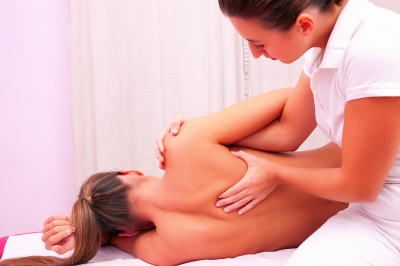Massage Therapy is an increasingly popular complementary therapy practice. There are a growing number of people who seek massage therapy for the relief of pain, stiffness, and discomforts related to conditions such as Arthritis, Back Pain, Neck Pain, and Skin Care Conditions. Massage has been practiced by indigenous peoples for centuries and has become part of Western medicine’s arsenal of healthcare professionals.

Massage therapy incorporates massage techniques into many forms of traditional medical treatment, including Acute Physiotherapy, Alternative Health, Cardiovascular Care, Dermatology, Ear and Mouth, Emergency, Dermatology, ENT, Fertility, Heating and Facial, Headaches and Stiffness, Hemorrhoids, Muscle and skeletal, Sports and Exercise, and vision and Behavioral Medicine. Massage therapists are licensed and trained in the application of basic massage techniques and skills. They are expected to have knowledge in the areas of human anatomy, pediatrics, geriatrics, internal medicine, family practice, and professional ethics. A massage therapist should be licensed in his or her state and be registered with the State Board of Massage Therapy. The minimum training requirements are normally four years at a community college or vocational/trade school or two years at an accredited university.
Massage therapists work on a specific pattern. The massage therapist begins with diagnostic questions to discover the underlying cause of the patient’s symptoms. Based on the answers, the massage therapist will design a treatment plan for the patient based on the identified needs. The most common areas of massage therapy treatment are the soft tissues, muscles, ligaments, tendons, and joints.
Massage therapists may learn by reading, having classroom instruction in a massage therapy program, or through instruction from a massage therapist mentor. Massage therapists can obtain a certificate, associate’s degree, bachelor’s degree, and even a master’s degree through continuing education courses. There are many schools and organizations that offer education programs, some requiring only a few hundred hours of study. Most schools and colleges will require that you have at least 500 hours of supervised clinical experience in massage therapy before you can enroll in their programs.
Many states require that massage therapists complete a minimum number of hours of continuing education courses each year. Courses can be purchased from a local bookstore, online, or at a local hospital or recreation center. Most states also require massage therapists to pass an exam before they can take the licensing exam that is required for massage therapy professionals. This exam is known as the National Certification Examination for Therapeutic Massage and Bodywork. Passing the certification examination earns you a national credential.
Massage therapists use different massage therapy products and techniques. Some of the popular massage therapy products used by massage therapists include sports massage, shiatsu, reflexology, and deep tissue. Sports massage focuses on the muscles and joints of the body, whereas shiatsu works on the acupoints located in the hands and feet. Reflexology is used for healing and relief of pressure points located in the hands, feet, and even the face and scalp. Deep tissue massage is used to reduce stiffness and tightness in the deep tissue of the body.



